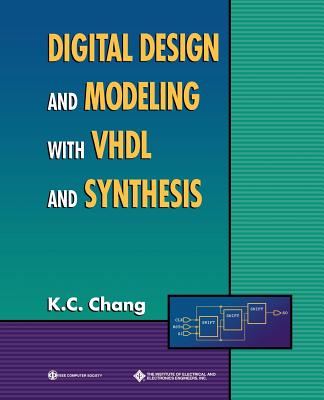Digital Design: Basic Concepts and Principles
暫譯: 數位設計:基本概念與原則
Mohammad A. Karim, Xinghao Chen
- 出版商: CRC
- 出版日期: 2007-11-27
- 售價: $5,870
- 貴賓價: 9.5 折 $5,577
- 語言: 英文
- 頁數: 504
- 裝訂: Hardcover
- ISBN: 1420061313
- ISBN-13: 9781420061314
海外代購書籍(需單獨結帳)
商品描述
The authors begin by discussing conventional and unconventional number systems, binary coding theories, and arithmetic as well as logic functions and Boolean algebra. Building upon classic theories of digital systems, the book illustrates the importance of logic minimization using the Karnaugh map technique. It continues by discussing implementation options and examining the pros and cons of each method in addition to an assessment of tradeoffs that often accompany design practices. The book also covers testability, emphasizing that a good digital design must be easy to verify and test with the lowest cost possible. Throughout the text, the authors analyze combinational and sequential logic elements and illustrate the designs of these components in structural, hierarchical, and behavior VHDL descriptions.
Coveringfundamentals and best practices, Digital Design: Basic Concepts and Principles provides you with critical knowledge of how each digital component ties together to form a system and develops the skills you need to design and simulate these digital components using modern CAD software.
商品描述(中文翻譯)
在當今的數位設計環境中,工程師必須快速周轉,並能隨時訪問電路合成和模擬應用程式。這種生產力依賴於計算機輔助設計(CAD)的原則和實踐。數位設計:基本概念與原則探討了當今數位設計實踐中許多關鍵的挑戰性問題,例如危險性和邏輯最小化、有限狀態機合成、循環和競賽以及可測試性理論,同時提供使用業界最受歡迎的設計應用程式之一,Xilinx Web PACK™的實作經驗。
作者首先討論傳統和非傳統的數字系統、二進位編碼理論以及算術和邏輯函數與布林代數。基於數位系統的經典理論,本書說明了使用卡諾圖技術進行邏輯最小化的重要性。接著討論實作選項,並檢視每種方法的優缺點,以及設計實踐中常伴隨的權衡評估。本書還涵蓋了可測試性,強調良好的數位設計必須易於驗證和測試,並以最低的成本實現。在整個文本中,作者分析了組合邏輯和時序邏輯元件,並以結構化、層次化和行為的VHDL描述來說明這些元件的設計。
涵蓋基本原則和最佳實踐,數位設計:基本概念與原則為您提供了關於每個數位元件如何結合形成系統的關鍵知識,並培養您使用現代CAD軟體設計和模擬這些數位元件所需的技能。


























